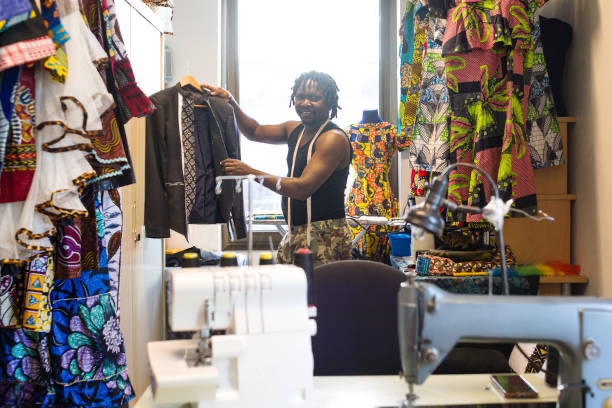Nigeria’s fashion industry, valued between $2.5 billion and $6 billion annually, stands as a dynamic and rapidly expanding sector of the national economy. Yet, this market is far from monolithic. It is a mosaic of varied consumer groups and sellers, ranging from informal thrift traders and local tailors to upscale boutiques and luxury labels. Each segment’s fashion preferences are shaped by factors such as income, cultural identity, and access to diverse retail channels. Despite robust demand, much of Nigeria’s fashion market remains informal and underfunded, leaving considerable growth potential untapped.
Drawing from recent research on undercapitalized growth sectors, this overview explores six distinct fashion segments flourishing in Nigeria, revealing who finances the sellers behind the scenes—from grassroots entrepreneurs to elite fashion houses.
1. The Thrift and Tailor-Made Sector
Representing the largest portion of Nigeria’s fashion consumers—approximately 40–45%—this group mainly consists of low- to middle-income earners who spend between ₦36,000 and ₦100,000 annually on clothing. Their buying decisions prioritize affordability and accessibility, frequenting venues such as Katangua market, bend-down-select stalls, and local tailors. Sellers here operate within informal, cash-based systems, funding their businesses through personal savings, rotating thrift groups (ajo), cooperatives, and small informal loans. This entrepreneurial model thrives on daily turnover and precise inventory management but remains financially vulnerable.
2. Urban Professionals
Accounting for roughly 20–25% of the market, this demographic is composed of salaried workers in banking, technology, media, and similar sectors. They view fashion as a personal and professional statement, spending between ₦150,000 and ₦1.5 million yearly. Their purchases often come from Instagram shops, WhatsApp boutiques, e-commerce platforms, bespoke designers, and mid-tier imported brands. Funding sources include monthly salaries, side hustles, and increasingly, Buy Now Pay Later (BNPL) options via fintech services. Retailers serving this group tend to be registered mid-sized enterprises that utilize digital payment solutions, access retail financing, and occasionally secure early-stage investments from angel investors eager to capitalize on Nigeria’s burgeoning fashion economy.
3. The Creative Class
This segment, comprising influencers, entertainers, and Gen Z creatives, accounts for just 5–7% of the market but wields significant cultural influence. Their spending ranges from ₦600,000 to ₦3 million or more annually, sourced from online boutiques, vintage shops, and Instagram stores. Many work closely with stylists and often receive clothing through brand sponsorships or influencer collaborations. Sellers targeting this group rely on pre-orders, social media marketing, and partnerships with creatives to maintain relevance and secure funding.
4. High Net-Worth Shoppers
Representing less than 1% of the market, this elite group includes politicians, senior executives, and diaspora members who spend between ₦4 million and ₦20 million or more annually. Their shopping habits involve personal shoppers, luxury stylists, and international luxury brands. Financing often comes from business revenues, international credit facilities, and offshore accounts. Vendors catering to this clientele function like concierge services, sourcing exclusive pieces directly from global fashion capitals such as Milan and Paris, often supported by venture capital, private equity, or family wealth.
5. The Event Traditionalist
Spanning various income levels, this group is integral to Nigeria’s fashion economy, particularly around weddings, funerals, and cultural events. Responsible for 60-70% of annual event-related fashion purchases, they typically spend between ₦150,000 and ₦5 million or more, depending on the occasion. Shopping revolves around aso-ebi sellers, fabric vendors, and traditional designers. Funding is often pooled from family resources, event budgets, or community contributions. Vendors depend on bulk orders, upfront payments, and informal credit lines to meet seasonal demand.
6. Fabric Entrepreneurs
Situated at the crossroads of culture and commerce, these entrepreneurs harness Nigeria’s indigenous textiles—such as adire, ankara, lace, and aso-oke—to create sustainable fashion enterprises. This segment offers promising opportunities for cultural preservation and export growth. Production and sales take place in hubs like Aba and other textile markets nationwide. Funding sources vary widely, including personal savings, NGO grants, creative funds, and loans. These entrepreneurs are increasingly visible at cultural exhibitions and international trade shows.

